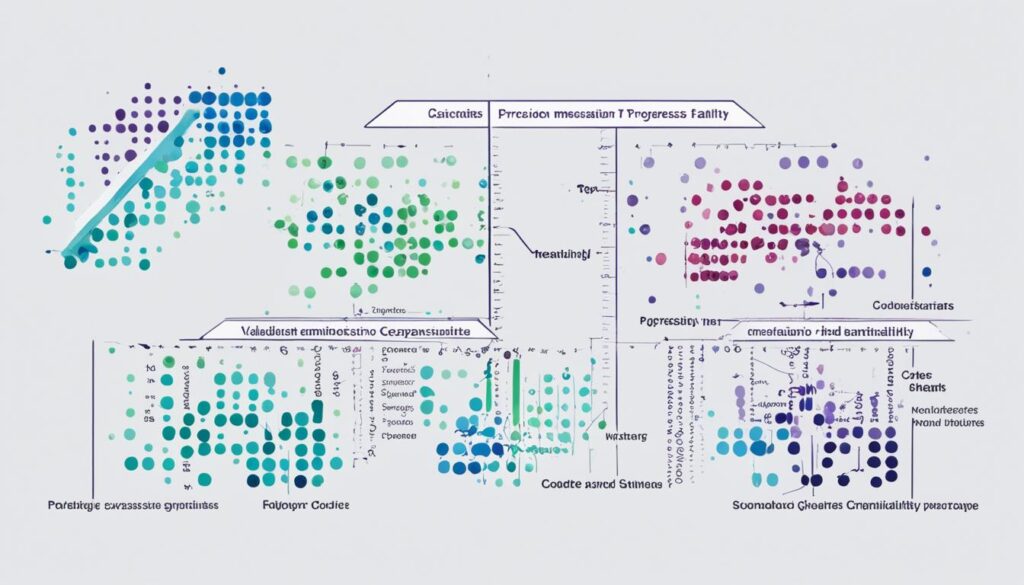When it comes to designing synchronous digital systems, clock domain crossing (CDC) is a well-known challenge. CDC refers to the transfer of data between asynchronous clock domains, and one of the major issues that can arise is metastability. Metastability occurs when signals are transferred between these clock domains, leading to potential functional failures.
Ensuring CDC-clean designs is a critical signoff criteria for modern ASIC development teams, especially for large ASICs with hundreds of clocks and potentially millions of CDC clock crossings. However, achieving this can be a time-consuming and complex process. The sheer volume of CDC violations can be overwhelming, making it difficult to identify the real problems.
Moreover, the inclusion of third-party IP blocks adds another layer of complexity to CDC verification. Debugging productivity is also a crucial consideration in CDC analysis.
In this article, we will explore the various challenges faced in CDC verification and discuss potential solutions to address them effectively.
Table of Contents
The Turnaround Time Problem
The time and effort required to achieve CDC-clean designs can be non-trivial, especially for large ASICs with numerous clock domains. However, there is a solution to expedite the verification process and reduce turnaround time – a hierarchical, bottom-up approach.
By performing CDC analysis iteratively on individual blocks, we can identify and resolve CDC issues more efficiently, ultimately accelerating the turnaround time. This approach allows us to refine constraints and waivers at each level of the hierarchy, streamlining the identification and resolution process.
Embracing this hierarchical approach in CDC verification enables us to mitigate the challenges associated with complex designs. It not only saves time but also ensures thorough analysis of CDC crossings throughout the ASIC.
To support this efficient hierarchical approach, Synopsys VC SpyGlass CDC offers the CDC signoff abstraction model (SAM) flow. This flow provides significant improvements in turnaround time and memory requirements without compromising the quality of results.
Benefits of the Hierarchical Approach:
- Reduced turnaround time
- Iterative analysis on individual blocks
- Refinement of constraints and waivers
- Streamlined identification and resolution of CDC issues
- Improved memory management
This hierarchical approach, supported by Synopsys VC SpyGlass CDC’s SAM flow, empowers designers to efficiently achieve CDC-clean designs while meeting stringent project deadlines. It is a game-changing solution for reducing verification time and ensuring the reliability of complex digital designs.
| Challenges | Solutions |
|---|---|
| Limited time for CDC verification | Hierarchical, bottom-up approach |
| Overwhelming number of CDC violations | Iterative analysis on individual blocks |
| Refining constraints and waivers | Constraints and waivers reviewed at each hierarchy level |
| Long identification and resolution process | Streamlined resolution with iterative analysis |
| Memory limitations | Synopsys VC SpyGlass CDC’s SAM flow |
The White Noise Problem
When conducting CDC analysis, one of the major challenges faced by development teams is the sheer volume of violations. The high number of violations can create a significant amount of white noise, making it difficult to identify the real problems that require attention. Manual analysis of these violations is not only unreliable but also time-consuming, impeding the overall efficiency of the CDC verification process.
However, there is a solution to this problem. Machine learning (ML) approaches can be utilized to cluster violations into manageable groups that share common root causes. By categorizing these violations and identifying the top issue clusters, the analysis becomes more streamlined, enabling faster identification and resolution of CDC issues.
At Synopsys, we have implemented ML-based techniques in our CDC analysis tool, VC SpyGlass CDC, to perform root-cause analysis on CDC violations. This innovative approach provides valuable debug clues and guides developers towards effective solutions. By harnessing the power of machine learning, VC SpyGlass CDC significantly reduces the violation white noise, allowing development teams to prioritize and resolve CDC issues more efficiently.
With the ML-based framework, CDC analysis becomes a more targeted and effective process, saving valuable time and effort in identifying and resolving CDC violations. By leveraging advanced technologies such as machine learning, development teams can enhance their CDC verification capabilities and ensure the successful execution of complex digital designs.
See below for a summary table of the benefits of using machine learning in CDC analysis:
| Benefits of Machine Learning in CDC Analysis |
|---|
| Reduces white noise from a large volume of violations |
| Enables faster identification and resolution of CDC issues |
| Provides valuable debug clues |
| Improves efficiency in prioritizing and resolving CDC problems |
By incorporating machine learning into CDC analysis, development teams can overcome the challenges posed by the white noise problem, ensuring the successful implementation of CDC-clean designs.

Are My Constraints Correct?
In CDC analysis, constraints play a crucial role in driving the flow and ensuring accurate results. It is essential to review and validate constraints files to verify their correctness. Incorrect constraints can lead to inaccurate CDC analysis, potentially resulting in functional failures and other issues.
One effective way to validate constraints is by converting them into dynamic assertions and incorporating them into normal dynamic verification environments such as simulation. This additional step adds an extra layer of constraints validation, allowing us to identify any potential errors or mismatches in the constraints file.
Similarly, it is important to regularly check and update violation waivers, especially in scenarios where late RTL changes or netlist ECOs can impact the validity of the waivers. Keeping the violation waivers up to date ensures that the CDC analysis remains accurate and effective.
Validating constraints and updating violation waivers are crucial steps in ensuring the integrity of the CDC analysis process. By double-checking these essential elements, we can enhance the quality and reliability of our CDC verification efforts.

| Steps for Constraints Validation: |
|---|
| 1. Review and understand the constraints files |
| 2. Convert constraints into dynamic assertions |
| 3. Validate constraints in dynamic verification environments |
| 4. Identify and address any potential errors or mismatches |
| 5. Regularly check and update violation waivers |
Dealing with Third-Party IP Blocks
When designing multi-billion gate ASICs, incorporating third-party IP blocks can introduce additional challenges in CDC verification. While CDC constraints provided by IP suppliers can be integrated into the design flow, they may not include a signoff abstraction model. This poses a problem for ensuring CDC-clean designs.
To effectively handle third-party IP blocks, we recommend creating a wrapper level around the IP block. This wrapper level generates a signoff abstraction model that can be used in the hierarchical approach. By adopting this approach, CDC analysis can be performed at each level of integration, ensuring that the design remains CDC-clean.
Proper handling of third-party IP blocks is crucial to avoid CDC issues and maintain the overall functionality and reliability of the final ASIC. By creating a wrapper level and utilizing a signoff abstraction model, we can confidently incorporate third-party IP blocks while ensuring a robust CDC verification process.

